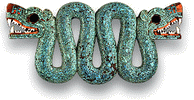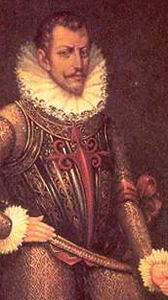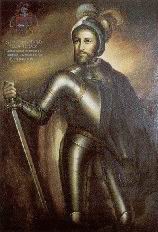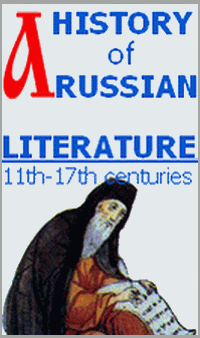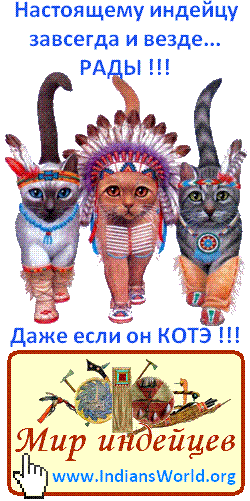European Influence and conquest of the Maya
Category: Maya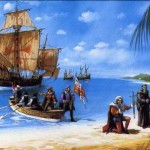 The earliest known contact by Europeans probably occurred during the last voyage of Christopher Columbus in 1502. However, the existence of the Maya did not become fully known to the outside world until 1517, when three ships commanded by Francisco Hernandez de Cordova landed at Cape Catoche. They arrived back in Cuba almost dead from starvation. Cordova reported that he had discovered mysterious cities on the Yucatan’s coast and that they had fought savage battles against the Maya warriors. They brought back with them, gold ornaments and necklaces stolen out of the Maya temples At once, the Governor of Cuba Diego Valasquez send out an expedition under his nephew Juan de Grijalva. After retracing Cordova’s previous route they entered the Rio Tabasco and immediately encountered Maya from whom they obtained some gold objects in trade. It was here that they also heard rumors of the wealthy Aztec empire called Mejico. In an effort to verify these reports Grijalva sailed northward to Veracruz. There they met emissaries who had been sent by Montezuma the Aztec emperor. With them was a large quantity of gold that he had sent to appease the Spaniards. However, it had the opposite effect. Instead, this fatal mistake would launch the Spanish Conquest of Mexico and end up costing Montezuma his life. After hearing about Grijalva’s revelations Cortes would march to Tenochtitlan with soldiers, artillery, horses, and heavy armor. Along side of them would be thousands of Indians allies from the Tlaxcalan and Totonac tribes. It would take Cortes almost two years to topple Tenochtitlan and loot all of its treasure.
The earliest known contact by Europeans probably occurred during the last voyage of Christopher Columbus in 1502. However, the existence of the Maya did not become fully known to the outside world until 1517, when three ships commanded by Francisco Hernandez de Cordova landed at Cape Catoche. They arrived back in Cuba almost dead from starvation. Cordova reported that he had discovered mysterious cities on the Yucatan’s coast and that they had fought savage battles against the Maya warriors. They brought back with them, gold ornaments and necklaces stolen out of the Maya temples At once, the Governor of Cuba Diego Valasquez send out an expedition under his nephew Juan de Grijalva. After retracing Cordova’s previous route they entered the Rio Tabasco and immediately encountered Maya from whom they obtained some gold objects in trade. It was here that they also heard rumors of the wealthy Aztec empire called Mejico. In an effort to verify these reports Grijalva sailed northward to Veracruz. There they met emissaries who had been sent by Montezuma the Aztec emperor. With them was a large quantity of gold that he had sent to appease the Spaniards. However, it had the opposite effect. Instead, this fatal mistake would launch the Spanish Conquest of Mexico and end up costing Montezuma his life. After hearing about Grijalva’s revelations Cortes would march to Tenochtitlan with soldiers, artillery, horses, and heavy armor. Along side of them would be thousands of Indians allies from the Tlaxcalan and Totonac tribes. It would take Cortes almost two years to topple Tenochtitlan and loot all of its treasure.
Very soon afterwards large areas once inhabited by Maya came under Spanish attack. The Maya had traded extensively with the Aztecs, and even though the Aztecs were Mesoamericas’s most powerful empire, the Mayan’s insisted on maintaining their own independence. Since 1300, the Quiche Mayans had ruled over the Guatemalan highlands, and when the Aztec’s tried to advance against Mayan territories they were met with great resistance. They ruled from their sacred mountain top capital, which was called Utatlan. The Quiche realm was the largest in Central America It was created by prowess of two great military leaders. Their legendary leader was named K’ucumatz (1375-1425) and his son Quik’ab (1425-1475). The Quiche believed both men had supernatural shamanistic powers. The Mayans believed that Utatlan was favored by the gods, and the surrounding cities were required to pay tribute. At this time the population of Utatlan was approximately 50,000. In 1470. the Cakchiquel Mayans rebelled and set up their own kingdom. This was followed by the Tzutujil Maya on Lake Atitlan. Soon, more and more rebellions occurred forcing the population out of the vulnerable valley sites that had been their homes for more than 1.000 years. The Maya positioned themselves in medieval European fortress like castles on mountain ridges These fortress-like cities looked down on the cultivated valleys bellow, and they were protected by moat-like ravines. When the enemy was near the population of Utatlan would swell as everyone fled to the city for safety. At least three citadels guarded the city and its 140 civic buildings.
By 1510, civil war had weakened the Quiche Mayans so much that they were now making tribute payments of gold, cacao, quetzal feathers, and textiles to Tenochtitlan. In return, for his loyalty, Montezuma gave away two of his daughters to a Quiche ruler. Many Quiche caciques learned Nahuatl as Nahuatl had become the universal language used by merchant traders.
Pedro De Alvarado
In 1523, Cortes sent Captain Pedro de Alvarado, 400 soldiers. 160 horses, and plenty of artillery, ammunition, crossbowmen, and musketeers to conquer Guatemala and El Salvador. Cortes spent to much money that it put him into considerable debt, but he expected to be adequately compensated from the gold, silver, and jewels that would be found. Alvarado was described as handsome, and a natural leader of soldiers. He was Cortes’ leading captain. They were accompanied by over 20.000 Indian auxiliaries. The Indians included Tlaxcalans, Mixtecs, Zapotecs, as well as some recently conquered Aztecs. Utatlan refuse to cooperate with the Spaniards. They tried to unite all of the Mayan factions, but they were too late. The Cakchiquels had already made a pact with the Spaniards. The Cakchiquels sent 2.000 soldiers to slaughter the Quiches. The great Quiche captain Tecum organized 10.000 troops from the surrounding towns to fight the Spaniards. The Quiches met the Spaniards outside of what is today called Quetzaltenango. Alvarado estimated that at the time of battle there were 30.000 Quiche warriors. Alvarado and his men rolled over the Quiches in what has been described as a very bloody battle. After the battle the Quiches agreed to make peace with him. They invited him to Utatlan for a feast and as Alvarado crossed a ravine into the walled fortress city he feared a trap. Alvarado and his men barely made it out with their lives. The Spaniards escaped to the valley plains below the citadel. They would have to fight the Quiches one more time before they would finally give in to Spanish occupation.
Unlike Mexico, there wasn’t any type of central authority ruling what remained of Guatemala. Instead, much like today, the Spanish found great ethnic diversity. They were forced to separately conquer each city-state and chief Making things even more difficult were the constant uprisings. Some cultures required more than one suppression. In order to intimidate the Mayans he tortured and burned the rulers alive. Then, even when they surrendered to him peacefully he still enslaved them. When his conquest extended south towards El Salvador the Pipil Indians abandoned their cities rather than face enslavement, torture, or death. Soon. Alvarado began frustrated with the lack of wealth in Guatemala. There was no gold to be found. The first permanent Spanish settlement. Santiago de Guatemala was established at the foot of Volcan Agua in November 1527. Alvarado returned to Mexico to claim his conquest of Guatemala only to have the Cakcquichel Mayans flee into the mountains and rebel for two more years. By 1532, the Cakcquichel were working as slaves for the Spaniards.
In 1524, an expedition to conquer Honduras was led by Cristobal de Olid. Olid was under direct orders from Hernando Cortes. Honduras fell with little interference. Then, as soon as it fell Olid declared it his personal kingdom. During the next two years six conquistadors would clash with him over control of the territory. In order to maintain control Olid killed his nephew and imprisoned two fellow conquistadors. Before long. Olid’s would be captured and imprisoned. He was subsequently beheaded.
Francisco de Montejo
Then in 1526, Francisco de Montejo received a royal decree authorizing him to subjugate the Yucatan Peninsula. Montejo’s first attempt in 1527 ended in disaster. Disease, mutiny by his soldiers, and the determined resistance of the Maya forced him to withdraw to Mexico. Three years later Montejo again tried to retake the Yucatan. This time he attempted to colonize several different locations He even constructed a garrison at the ruins of Chichen Itza. Montejo lost everything, and became bitterly disappointed by his failures. Then in 1541, Montejo was too old to return to the Yucatan so he empowered his son. His son had the same exact name, and this time things would be quite different. First, disease (small pox) had now taken an extensive toll on the Mayan population. The Maya had no natural immunity to the European diseases. Smallpox was followed by influenza, yellow fever, measles tuberculosis amebic dysentery, and very possibly malaria and hookworm. Also, the Yucatan Peninsula had been repeatedly wipped out by locust invasions that left nothing to eat. Montejo had with him 350 well-equipped soldiers and a large group of Maya auxiliaries, who were called the Xiu. From a centralized location he sent out repeated military expeditions to subdue the areas that refused to be subdued.
After one year Montejo the Younger had managed to conquer the entire western half of the peninsula. Then, on Jan. 6.1542. he selected the ancient town of T’ho as a permanent site for a capital. He named it Merida, and used this site as his base of operations. By 1547, he had full control over the Yucatan.
Only one area of Guatemala remained free from Spanish control. This was the jungle-covered lowlands of Peten, where the ancient city of Tikal had been constructed. This area has an extremely hostile environment and is largely uninhabited even today. Scattered groups of Maya managed to live in the most remote parts of this region without Spanish control for another one hundred and fifty years. The largest of these groups were the Itza, whose capital of Tayasal, was on an island in Lake Peten Itza. By 1618, several attempts were made at converting the Itza to Christianity, but these attempts proved futile. Then, when another missionary named Diego Delgado made an attempt they took him captive and sacrificed him. This action provoked military action. In March, 1697, Martin de Ursua arrived at Lake Peten Itza with a large modern military force. The first thing he did was have a small galley constructed so he could attack Tayasal by water. Hundreds of Itza were killed as it quickly turned into a slaughter.
From the very beginning of the Spanish Conquest the Indians had been reduced to slaves and had their lands confiscated. This immediately had become an accepted practice. Also, the Spanish conquistadors wanted to be compensated for their services. The Spanish believed that the best way to achieve this was through the Spanish encomienda. Under this feudal system the Spaniards were awarded land grants together with the services of the natives. The natives who were largely vassals of the landowners, were required to work in mines, construction projects, and harvest crops. In addition, they were required to pay regular tributes to their lords. Usually the conditions were horrible and if they complained they were severely punished. Punishment included beatings, torture, imprisonment, and execution. Sometimes if they rebelled they were sold into outright slavery. Alvarado himself received an enormous encomienda. It included the labor and tribute from the highly populated areas of Quetzaltenango, Atitlan, as well as Santa Cruz Utatan (the new name for Utatlan). Franciscan and Dominican friars worked simultaneously at obliterating Mayan religious beliefs. All important temples, shrines, and alters were destroyed. Any at tempt to worship idols, wear ceremonial costumes, or enact native religious rights were vigorously suppressed.
Catholic faith became mandatory, and failure to accept conversion was met with harsh penalties.
Christian dogma was enforced with brutal methods. Beatings, whippings, mutilation, and scalding with boiling water were frequently used according to the Spanish mayor of Merida, Diego Quijada. These acts frequently provoked Maya rebellion, and plots to overthrow the Spaniards were numerous. However, the result was always the same, after initial success the Spaniards remained in control.
In 1549, a Franciscan friar named Diego de Landa came to Merida to serve at the monastery of Izamal. Wherever he went in the Yucatan he ordered the swift destruction of all remnants of the native religions. Landa was know for using severe measures in his attempts to cleanse the local pagans. Frequently, he used torture while converting the natives. Then on July 11, 1562, Landa committed an act that would horrify scholars forever. He publicly burned a repository of hieroglyphic books. These books were made from the bark of the wild fig tree, strengthened by a natural gum substance, and then coated in white stucco. Scribes had laboriously drawn figures and hieroglyphic symbols, coloring them with natural paints made from minerals and vegetables. In a few minutes all records of the history of the ancient Maya were destroyed.
